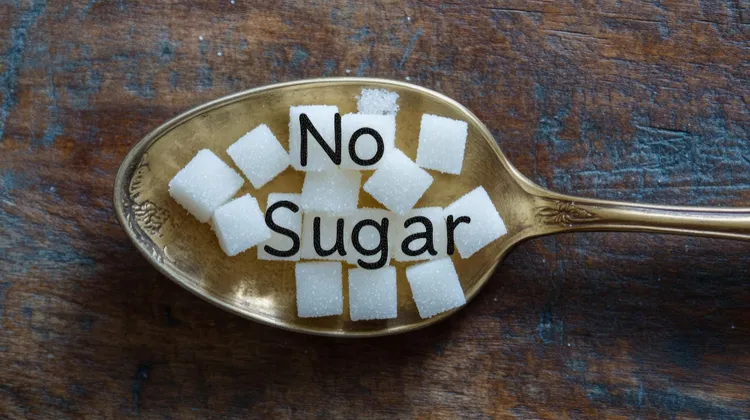10 Signs Your Body Is Addicted to Sugar: Breaking Free from the Sweet Trap
Sugar is everywhere - hidden in processed foods, splashed across social media as decadent desserts, and celebrated as a quick pick-me-up. While it’s natural to enjoy sweet treats, excessive sugar consumption can lead to a dependency that’s hard to shake. Sugar addiction isn’t just about willpower; it’s a physiological response that hijacks your brain and body, driving cravings and impacting your health. If you’ve ever felt like sugar has a hold on you, read on to uncover the truth and start your journey toward a healthier relationship with food.

Understanding Sugar Addiction
Before we dive into the signs, let’s clarify what sugar addiction means. Sugar, particularly refined forms like sucrose and high-fructose corn syrup, triggers the release of dopamine in the brain’s reward center, creating feelings of pleasure similar to those produced by drugs or alcohol. Over time, frequent sugar consumption can desensitize these reward pathways, requiring more sugar to achieve the same “high.” This cycle can lead to cravings, overeating, and dependency.
Unlike other addictions, sugar is socially acceptable and ubiquitous, making it harder to recognize. The average American consumes about 17 teaspoons (68 grams) of added sugar daily, far exceeding the American Heart Association’s recommended limit of 6 teaspoons (25 grams) for women and 9 teaspoons (36 grams) for men. Let’s explore the 10 signs that your body might be hooked on this sweet substance.
- Intense Cravings for Sugary Foods
What It Looks Like: You can’t stop thinking about cookies, soda, or candy, even after eating a balanced meal. The urge feels urgent and specific, like nothing else will satisfy you.
Why It Happens: Sugar stimulates dopamine release, creating a reward loop. Over time, your brain craves this hit, especially during stress or boredom, leading to obsessive thoughts about sugary foods.
What to Do: Replace sugary snacks with naturally sweet options like fresh fruit, which provides fiber to stabilize blood sugar. Distract yourself with a walk or hobby when cravings hit, as they often pass within 10-15 minutes.
- Feeling Tired or Sluggish After Eating Sugar
What It Looks Like: You grab a donut for a quick energy boost, but an hour later, you’re yawning and dragging. This “sugar crash” leaves you lethargic and foggy.
Why It Happens: Sugary foods cause rapid blood sugar spikes, prompting an insulin surge to shuttle glucose into cells. This overcorrection leads to a drop in blood sugar (hypoglycemia), causing fatigue and brain fog.
What to Do: Pair sweets with protein or healthy fats (e.g., a small piece of dark chocolate with almonds) to slow sugar absorption. Aim for balanced meals with complex carbs like quinoa or sweet potatoes to maintain steady energy.
- Frequent Hunger Despite Eating Enough
What It Looks Like: You’re hungry soon after meals, especially if they include sugary foods like cereal or flavored yogurt. You feel like you’re always snacking.
Why It Happens: Sugar lacks fiber, protein, and fats, which promote satiety. It also disrupts hunger hormones like leptin (which signals fullness) and ghrelin (which triggers hunger), making you feel unsatisfied.
What to Do: Focus on high-fiber, high-protein meals (e.g., grilled chicken with broccoli and brown rice). Include healthy fats like avocado or olive oil to enhance fullness and reduce cravings.
- Mood Swings or Irritability Without Sugar
What It Looks Like: You’re grumpy, anxious, or irritable until you get your sugar fix, like a mid-afternoon candy bar. After eating it, your mood temporarily improves.
Why It Happens: Sugar affects neurotransmitters like serotonin and dopamine, which regulate mood. Low blood sugar or withdrawal from sugar can mimic symptoms of anxiety or depression, driving you to seek more sugar for relief.
What to Do: Stabilize blood sugar with regular meals every 3-4 hours. Incorporate mood-boosting foods like fatty fish (rich in omega-3s) or nuts (high in magnesium). Practice stress-relief techniques like meditation to reduce emotional eating.
- Weight Gain, Especially Around the Belly
What It Looks Like: You’ve noticed your waistline expanding, even if you’re not eating large portions. Clothes feel tighter, particularly around your midsection.
Why It Happens: Excess sugar is converted to fat, especially in the liver, leading to visceral fat accumulation around the abdomen. High insulin levels from frequent sugar intake also promote fat storage and inhibit fat burning.
What to Do: Cut back on added sugars by reading labels (look for terms like “syrup,” “maltose,” or “dextrose”). Increase physical activity, especially strength training, to boost metabolism and reduce visceral fat.
- Skin Issues Like Acne or Premature Aging
What It Looks Like: You’re battling persistent acne, dull skin, or early signs of aging like fine lines, despite a solid skincare routine.
Why It Happens: Sugar triggers inflammation and spikes insulin, which can increase oil production and clog pores, leading to acne. It also causes glycation, where sugar molecules damage collagen, accelerating skin aging.
What to Do: Reduce sugary foods and drinks, focusing on anti-inflammatory foods like leafy greens, berries, and salmon. Stay hydrated with water to support skin health and flush out toxins.
- Trouble Concentrating or Brain Fog
What It Looks Like: You struggle to focus, feel mentally “cloudy,” or forget things easily, especially after sugary meals or snacks.
Why It Happens: Blood sugar fluctuations impair cognitive function, as the brain relies on steady glucose levels for energy. Chronic high sugar intake may also contribute to inflammation in the brain, affecting memory and focus.
What to Do: Eat brain-friendly foods like eggs, blueberries, or walnuts, which provide steady energy and nutrients. Limit sugar to small amounts of natural sources like fruit, and avoid processed carbs that mimic sugar’s effects.
- Increased Tolerance for Sweetness
What It Looks Like: Foods that once tasted sweet now seem bland, so you reach for sweeter options or add extra sugar to coffee, cereal, or desserts.
Why It Happens: Regular sugar consumption desensitizes taste buds, requiring more sugar to achieve the same level of sweetness. This cycle reinforces addiction and increases overall intake.
What to Do: Gradually reduce sugar in your diet to reset your taste buds. Try unsweetened coffee or tea for a week, or use spices like cinnamon to enhance flavor without sugar.
- Frequent Headaches or Migraines
What It Looks Like: You experience recurring headaches, especially after skipping sugary foods or during stressful times when cravings are high.
Why It Happens: Blood sugar fluctuations can trigger headaches by affecting blood vessels in the brain. Dehydration, often linked to high-sugar diets (as sugary drinks replace water), can also contribute.
What to Do: Stay hydrated with 8-12 cups of water daily. Eat balanced meals to prevent blood sugar dips, and consider tracking headaches to identify sugar-related triggers.
- Dental Problems Like Cavities or Sensitivity
What It Looks Like: You’re visiting the dentist more often for cavities, or your teeth feel sensitive to hot, cold, or sweet foods.
Why It Happens: Sugar feeds harmful bacteria in the mouth, producing acids that erode tooth enamel and cause cavities. Frequent sugar exposure, even from “healthy” sources like juice, increases this risk.
What to Do: Limit sugary snacks and drinks, rinsing your mouth with water after consuming them. Brush twice daily, floss, and consider sugar-free gum with xylitol to reduce bacterial growth.
The Science Behind Sugar Addiction
Sugar’s addictive potential lies in its impact on the brain’s reward system. When you eat sugar, dopamine floods the nucleus accumbens, creating a pleasurable “high.” Over time, the brain adapts by reducing dopamine receptors, so you need more sugar to feel the same reward. This mirrors the mechanics of drug addiction, though sugar’s effects are less intense.
Additionally, sugar disrupts the gut-brain axis. High-sugar diets alter gut microbiota, which can influence mood and cravings. Fructose, a common sugar in processed foods, is metabolized by the liver, where excess amounts are stored as fat, contributing to insulin resistance and metabolic issues that perpetuate cravings.
Health Risks of Sugar Addiction
Beyond the signs above, chronic sugar addiction can lead to serious health issues:
- Obesity: Excess sugar contributes to weight gain, particularly visceral fat linked to heart disease and diabetes.
- Type 2 Diabetes: Frequent sugar intake overworks the pancreas, leading to insulin resistance.
- Heart Disease: High sugar intake raises triglycerides, blood pressure, and inflammation, increasing cardiovascular risk.
- Fatty Liver Disease: Excess fructose overwhelms the liver, leading to non-alcoholic fatty liver disease.
- Mental Health Issues: Sugar’s impact on neurotransmitters may worsen anxiety, depression, or mood disorders.
How to Break Free from Sugar Addiction
Recognizing the signs is the first step; breaking the cycle is the next. Here’s a practical plan to reduce sugar dependency:
- Read Labels: Check for added sugars in packaged foods (aim for less than 5 grams per serving). Common culprits include sauces, dressings, and “healthy” snacks.
- Go Cold Turkey or Taper Off: For some, quitting sugar abruptly works best; others prefer gradual reduction. Replace sugary treats with fruit or small amounts of dark chocolate (70%+ cocoa).
- Eat Balanced Meals: Include protein, fiber, and healthy fats in every meal to stabilize blood sugar. Example: grilled salmon, quinoa, and steamed broccoli with olive oil.
- Stay Hydrated: Drink water to curb cravings and support detoxification. Aim for 2-3 liters daily, adjusting for activity and climate.
- Manage Stress: Stress triggers sugar cravings, so practice mindfulness, yoga, or deep breathing to reduce emotional eating.
- Get Enough Sleep: Poor sleep disrupts hunger hormones, increasing sugar cravings. Aim for 7-9 hours of quality sleep nightly.
- Stock Healthy Snacks: Keep nuts, hard-boiled eggs, or sliced veggies on hand to avoid reaching for sugary options.
- Reset Your Taste Buds: After 1-2 weeks of low sugar, your palate adjusts, and natural foods taste sweeter. Be patient during this transition.
- Consult a Professional: If sugar addiction feels overwhelming, a dietitian or therapist specializing in food behaviors can provide tailored guidance.
Cultural and Social Context
Sugar’s prevalence is no accident - it’s cheap, shelf-stable, and engineered to be irresistible. Food companies add sugar to everything from bread to ketchup, capitalizing on its addictive properties. Socially, sugar is tied to celebration, from birthday cakes to holiday candies, making it hard to cut back without feeling deprived. Reframing “healthy” as flavorful, nutrient-rich foods (like a vibrant fruit salad) can shift your mindset and make sugar reduction feel empowering, not restrictive.
Reclaim Control Over Sugar
Sugar addiction is a real challenge, but recognizing the signs is the first step toward freedom. Whether it’s constant cravings, mood swings, or unexplained weight gain, your body may be signaling that sugar has too much power. By understanding the science, making mindful food choices, and building sustainable habits, you can break the cycle and rediscover the joy of balanced eating. Your health - physical, mental, and emotional - is worth the effort.









